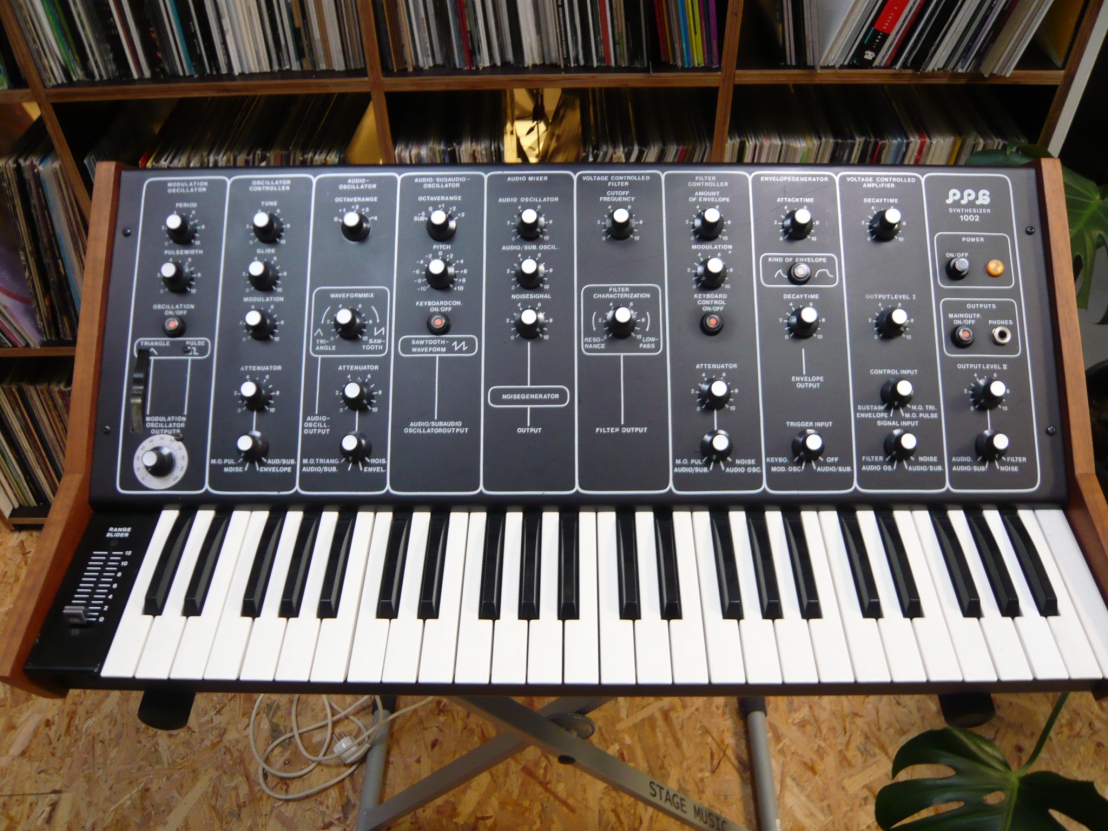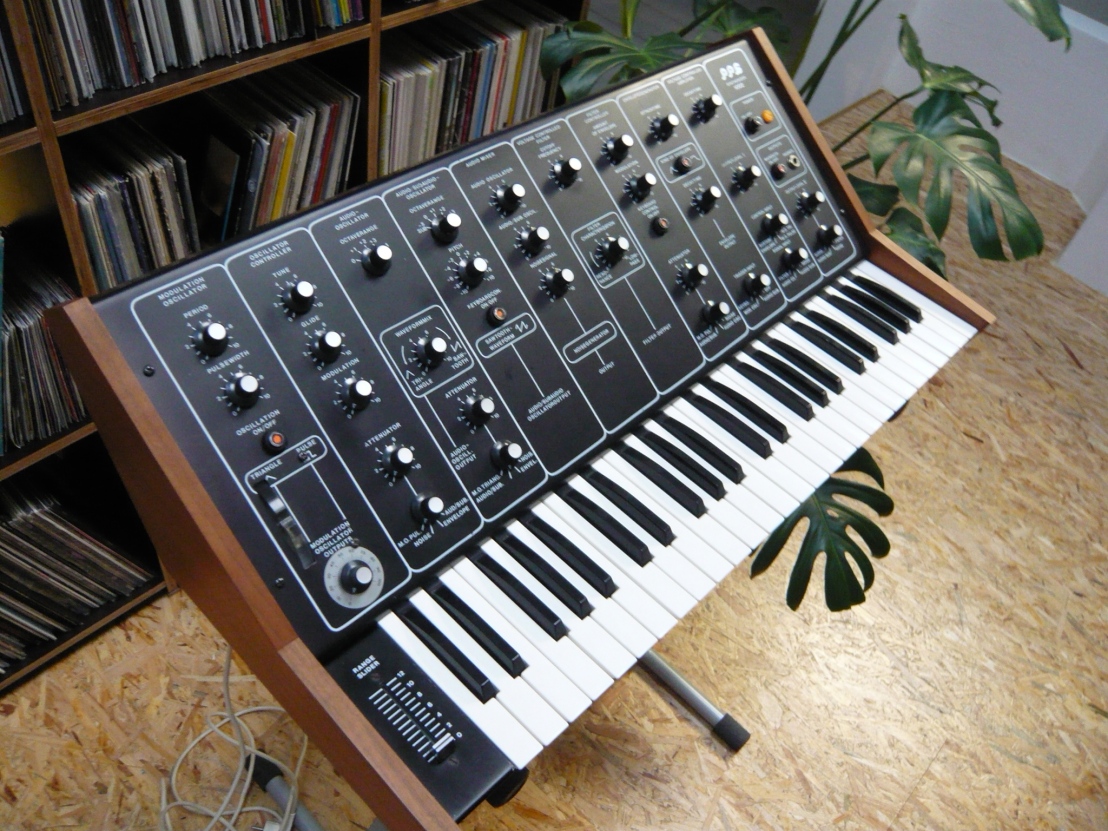Some years ago I received a beautiful PPG1002 synthesizer. These units seem to be quite rare, which makes me a proud owner I guess.

It is externally in a very good cosmetic shape, almost everything is fully functional, except for the pitch wheel and Pitch wheel offset, which looks like an aftermarket modification to me. Internally, a part of the original VCO PCB had been chopped away to make space for the pitch wheel leaving the power regulator and rectifier dangling on air-wires inside the unit.
One key had to be replaced but fortunately I had one as a spare part in stock.

Besides the chopped off PCB there was quite a lot of air-wired potentiometers, resistors and some opamp which look like an addition of a CV-Gate input circuit and some more stuff.
My plan was to restore it to it’s original state and add a CV-Gate circuit properly on a separate board.
8 years later, the PPG is still in my workshop and I find it with all the air-wired parts removed. Damn, I should have documented what I did that long time ago! Too bad that there are no pictures left of the time where I took it initially apart.
I started probing around and comparing it to my schematics in order to get it running. The oscillators work but everything is horribly out of tune with offsets on all CV inputs.
Somehow it is not possible to get both oscillators in tune and the pitch wheel also does not make any sense to me.
Now I realized what the purpose of the previously removed wiring and components was. It seems that it was intended to make up for the lack of calibration of the whole synth as well as adding external CV and Gate inputs.
So after studying the VCO and keyboard circuit for some more time, I went ahead and designed my own level/offset CV-summer and adjustment circuit.
I added individual summers and offset adjustments for keyboard control voltage, external cv input and pitch wheel input (I even included the pitchwheel range potentiometer which was previously not connected).
This way the amplification and offset of each individual control voltage can be adjusted which will simplify the calibration and tuning of the two oscillators. Furthermore I added a level shifter for the external gate input. After prototyping on breadboard, I transferred it to a nicely designed PCB and installed it to the PPG. I also had to replace the waveform switches by some new ones since they had somehow disintegrated.
Once all of this had been finished, I removed the flaky power supply and replaced it by a new unit on a separate PCB.
So after resting for 8 years in my workshop, my PPG1002 is finally usable and staying properly in tune.
















